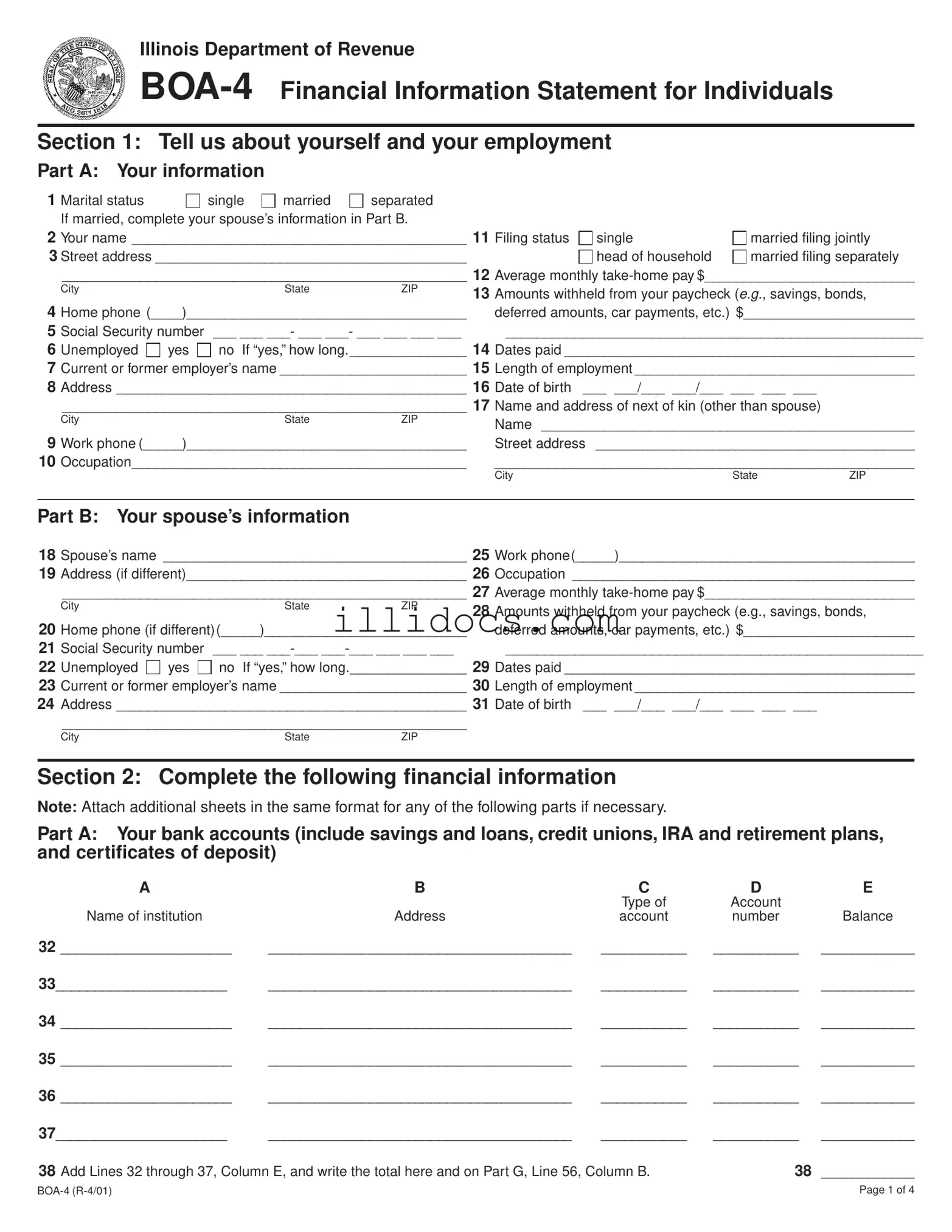What is the Illinois BOA-4 form used for?
The Illinois BOA-4 form, officially known as the Financial Information Statement for Individuals, is primarily used to provide detailed financial information to the Illinois Department of Revenue. Individuals may be required to complete this form when seeking assistance or relief related to taxes or financial obligations. The form collects information about personal details, employment, assets, liabilities, and income to assess an individual's financial situation accurately.
Who needs to fill out the BOA-4 form?
Individuals who are involved in tax-related matters with the Illinois Department of Revenue may need to complete the BOA-4 form. This includes those applying for tax relief, individuals facing financial hardship, or anyone whose financial information is necessary for the department's review process. If you are married, your spouse's information will also need to be included in the form.
What information is required on the BOA-4 form?
The BOA-4 form requires comprehensive financial details. You will need to provide personal information such as your name, address, marital status, and Social Security number. Employment information, including your occupation and average monthly take-home pay, is also required. Additionally, the form asks for details about your bank accounts, credit lines, real property, insurance policies, and any securities you own. You will also need to disclose your monthly income and necessary living expenses to give a complete picture of your financial situation.
What happens if I do not provide accurate information on the BOA-4 form?
Providing inaccurate or incomplete information on the BOA-4 form can lead to serious consequences. The Illinois Department of Revenue relies on the information provided to make decisions regarding tax relief or other financial matters. Failure to disclose required information may result in the form not being processed, potential denial of assistance, or even legal ramifications. It is essential to ensure that all information is truthful and complete to avoid complications.
